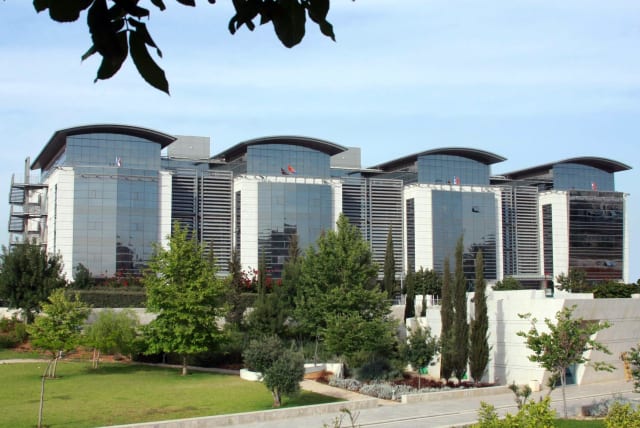The diversity-stability paradox: Israeli researchers solve 50-year-old puzzle

When the BIU team did the math, they found that this heterogeneity can fundamentally change the behavior of the system. Quite surprisingly, it actually enhances stability.
"What are nature’s devious strategies to ensure the stability of complex networks?"
This question, known in the field as the diversity-stability paradox, has continued to plague researchers for over five decades. In a study just published in the journal Nature Physics, researchers from Bar-Ilan University (BIU) in Ramat Gan solve this puzzle by offering, for the first time, a fundamental answer to this protracted question.
A single species invades an ecosystem causing its collapse. A cyberattack on the power system causes a major breakdown. This kind of event is always on our mind, yet they rarely result in such significant consequences. So how is it that these systems are so stable and resilient that they can withstand such external disruptions? Indeed, these systems lack a central design or blueprint, and still, they exhibit exceptionally reliable functionality.
In the early 70s, the field of ecology was split on the question of whether biodiversity is a good or a bad thing for an ecosystem. In 1972, Sir Robert May – an Australian scientist who became chief scientific adviser to the British government and president of the Royal Academy, who focused on animal population dynamics and the relationship between complexity and stability in natural communities – showed, mathematically, that an increase in biodiversity causes less ecological stability. He suggested that a large ecological system cannot sustain its stable functionality beyond a certain level of biodiversity and will inevitably collapse in the face of even the smallest twitch.
May’s publication not only contradicts current knowledge and empirical observations of real ecosystems but, more broadly, it seems to defy everything commonly known about interaction networks in social, technological and biological systems.
While May’s prediction suggests that all these systems are unstable, the BIU researchers said their experience was in direct contradiction, as “biology is manifested by genetic interaction networks, our brain operates based on a complex web of neuron and synapses, our social and economic systems are driven by social networks, and our technological infrastructure, from the Internet to the power grid, are all large complex networks which actually function quite robustly.”
The missing puzzle piece
The Israeli scientists led by Prof. Baruch Barzel of BIU’s mathematics department and the Gonda (Goldschmied) Multidisciplinary Brain Research Center found that the missing piece of the puzzle in May’s original formulation is that the patterns of interaction in social, biological and technological networks are highly non-random.
“Random networks tend to be rather homogeneous and all nodes within these networks are roughly the same. For instance, the probability of one individual having many more friends than average is tiny. Such networks may be sensitive and unstable. Real-world networks, on the other hand, are extremely diverse and heterogeneous. They include a combination of average, typically sparsely connected nodes, with ones that have many more links – hubs – that may be ten, 100 or even 1,000 times more connected than average,” they wrote in the article entitled “Emergent stability in complex network dynamic.”
When the BIU team did the math, they found that this heterogeneity can fundamentally change the behavior of the system. Quite surprisingly, it actually enhances stability. The analysis indicates that when a network is large and heterogeneous it acquires a guaranteed stability that is extremely robust against external forces. This clearly explains the fact that most networks around us – from the Internet to our brains – exhibit highly resilient functionality despite enduring constant perturbations and obstructions.
“This extreme heterogeneity can be seen in almost all networks around us, from genetic networks to social and technological networks,” Barzel said. “To put this in context, consider your friend on Twitter who has 10,000 followers, a thousand times the average. In everyday terms, if the average person is roughly two meters tall, such a thousand-fold deviation would be tantamount to meeting a two-kilometer-tall individual, which is obviously impossible. But it is what we observe every day in the context of social, biological and technological networks,” he added to explain the strong link between abstract mathematical analysis and seemingly simple, everyday phenomena.
Large and heterogeneous complex networks not only can be stable but, in fact, they often must be stable, Barzel continued. “Uncovering the rules that make a large complex system stable can offer new guidelines for tackling the pressing scientific and policymaking challenge of designing stable infrastructure networks that can not only protect against viable threats but also strengthen the resilience of crucial, yet fragile, ecosystems.”
Jerusalem Post Store
`; document.getElementById("linkPremium").innerHTML = cont; var divWithLink = document.getElementById("premium-link"); if (divWithLink !== null && divWithLink !== 'undefined') { divWithLink.style.border = "solid 1px #cb0f3e"; divWithLink.style.textAlign = "center"; divWithLink.style.marginBottom = "15px"; divWithLink.style.marginTop = "15px"; divWithLink.style.width = "100%"; divWithLink.style.backgroundColor = "#122952"; divWithLink.style.color = "#ffffff"; divWithLink.style.lineHeight = "1.5"; } } (function (v, i) { });

